Butterflies and Moths
Media
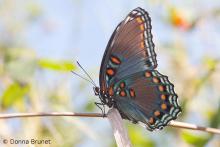
Species Types
Scientific Name
Limenitis arthemis
Description
The red-spotted purple is a stunning butterfly, even though the spots are really orange, not red, and blue is more prominent than the subtle violet hues.
Media

Species Types
Scientific Name
Speyeria idalia
Description
The regal fritillary is a large, silver-spotted, orange and blackish-gray butterfly of our native tallgrass prairies. Because of its dwindling habitat and steeply declining numbers, it is a species of conservation concern in Missouri and nationally.
Media
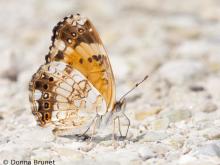
Species Types
Scientific Name
Chlosyne nycteis
Description
Black and orange above, paler below, the silvery checkerspot has a telltale wide white crescent in a brownish patch along the edge of the hindwing underside.
Media
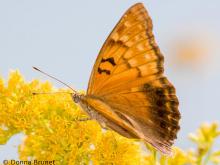
Species Types
Scientific Name
Asterocampa clyton
Description
The tawny emperor is less common than the hackberry emperor and has a rustier coloration. Both species feed on hackberry trees as caterpillars.
Media
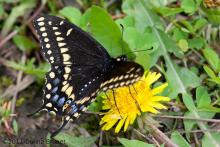
Species Types
Scientific Name
Papilio polyxenes
Description
Most gardeners meet the black swallowtail sooner or later, because parsley, carrot, fennel, and dill are favorite food plants of the caterpillars.
Media
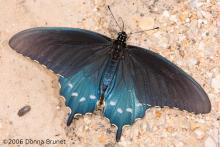
Species Types
Scientific Name
Battus philenor
Description
The pipevine swallowtail is ignored by most predators because of its acrid body juices. Several other butterflies benefit by looking strikingly similar.
Media

Species Types
Scientific Name
Pontia protodice
Description
The checkered white is named for the charcoal-colored patterns on the white wings of adults. As with the closely related cabbage white, the larvae feed on plants in the mustard family.
Media

Species Types
Scientific Name
Colias eurytheme
Description
One of the most common butterflies in Missouri, the orange sulphur often gathers in numbers in moist places.
Media
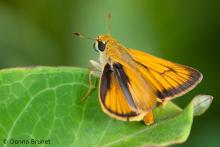
Species Types
Scientific Name
Anatrytone logan
Description
The undersides of the Delaware skipper's wings are solid orange. It's found statewide in a variety of habitats.
Media

Species Types
Scientific Name
Hylephila phyleus
Description
Fiery skippers have plain orange undersides scattered with a sprinkling of small dark spots. Males have flame-shaped orange patches on the hindwing upper surface.
See Also


Media

Species Types
Scientific Name
About 1,500 species in North America north of Mexico
Description
Adult caddisflies are mothlike. Their larvae are aquatic and build portable, protective cases out of local materials, including grains of sand, bits of leaves and twigs, and other debris.
Media

Species Types
Scientific Name
Corydalus cornutus
Description
Adult eastern dobsonflies are huge and mothlike, with large wings and a weak, fluttery flight. The fiercely predaceous aquatic larvae, called hellgrammites, are well-known to anglers, who often use them as bait.
About Butterflies and Moths in Missouri
Butterflies, skippers, and moths belong to an insect order called the Lepidoptera — the "scale-winged" insects. These living jewels have tiny, overlapping scales that cover their wings like shingles. The scales, whether muted or colorful, seem dusty if they rub off on your fingers. Many butterflies and moths are associated with particular types of food plants, which their caterpillars must eat in order to survive.





















